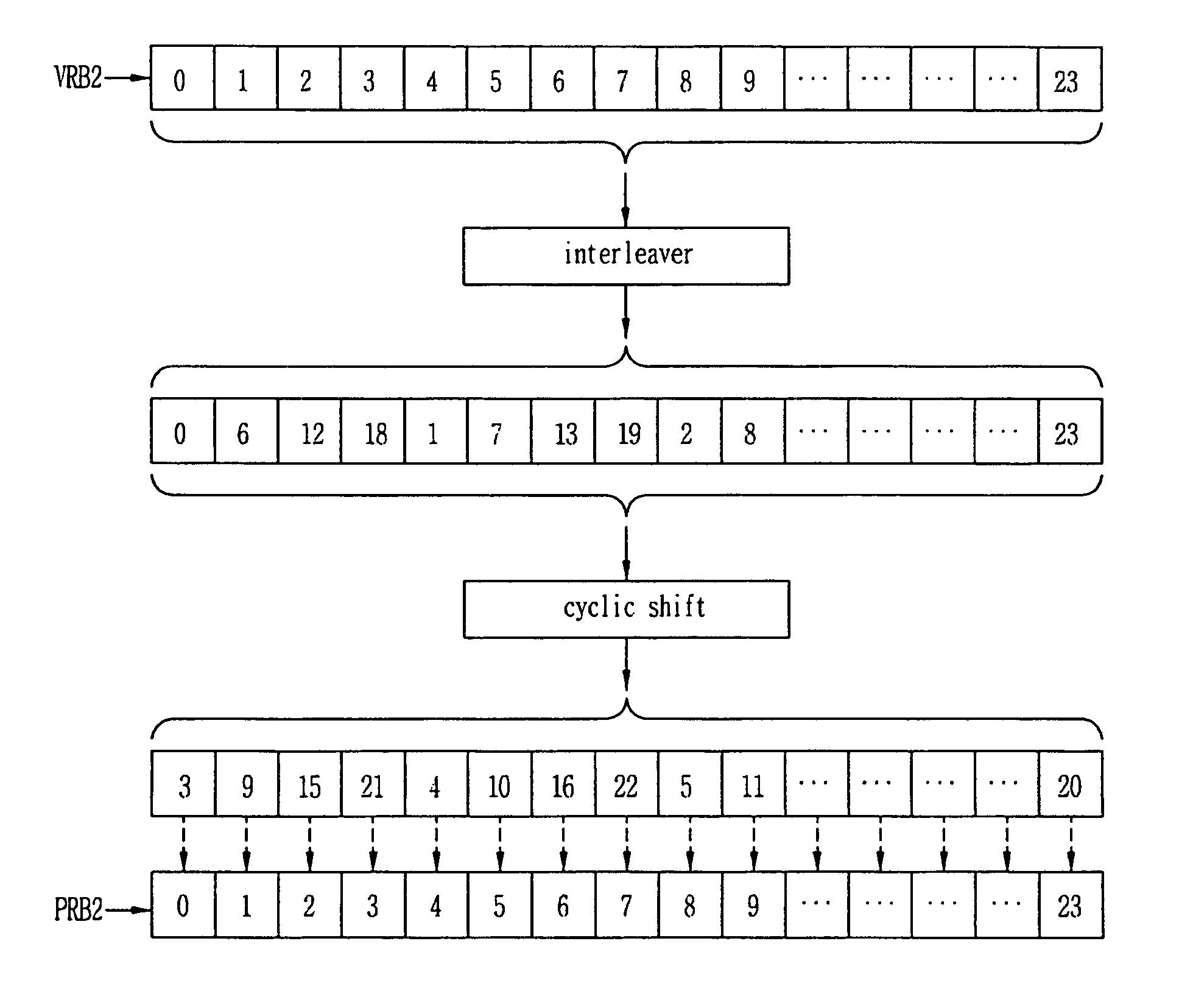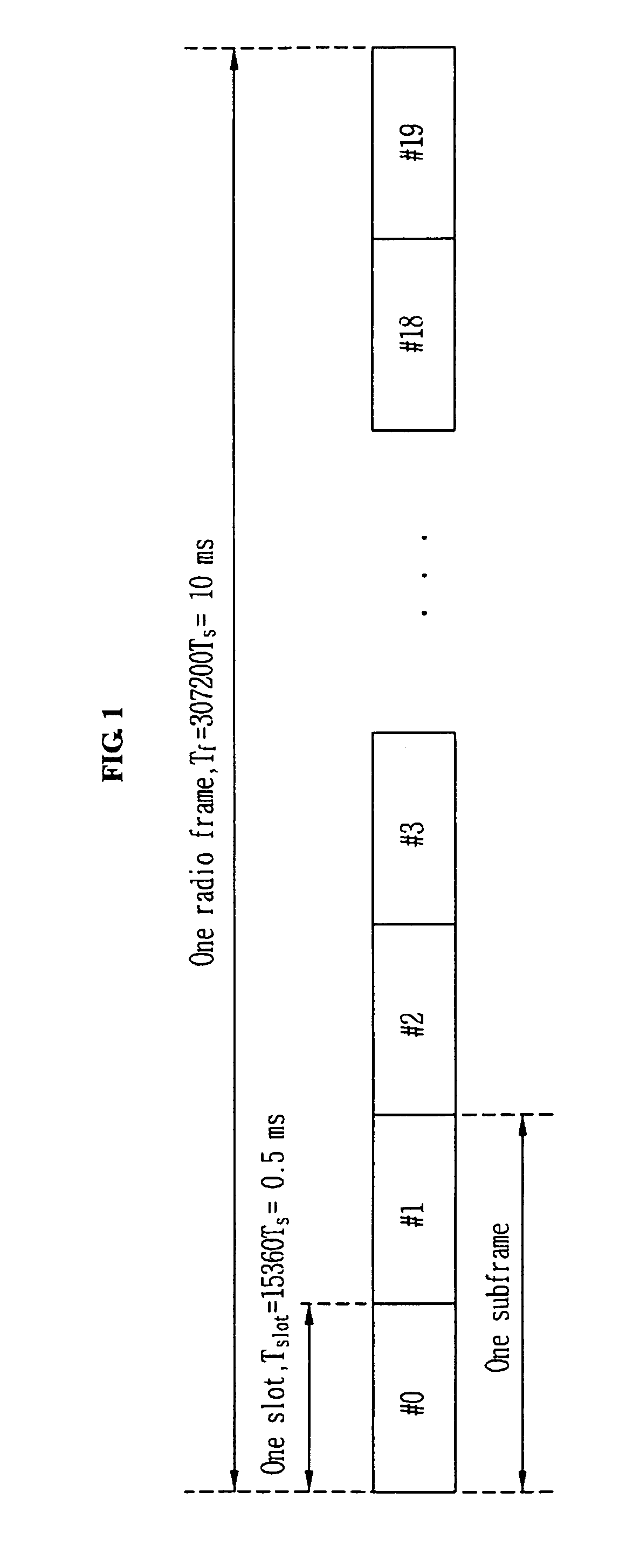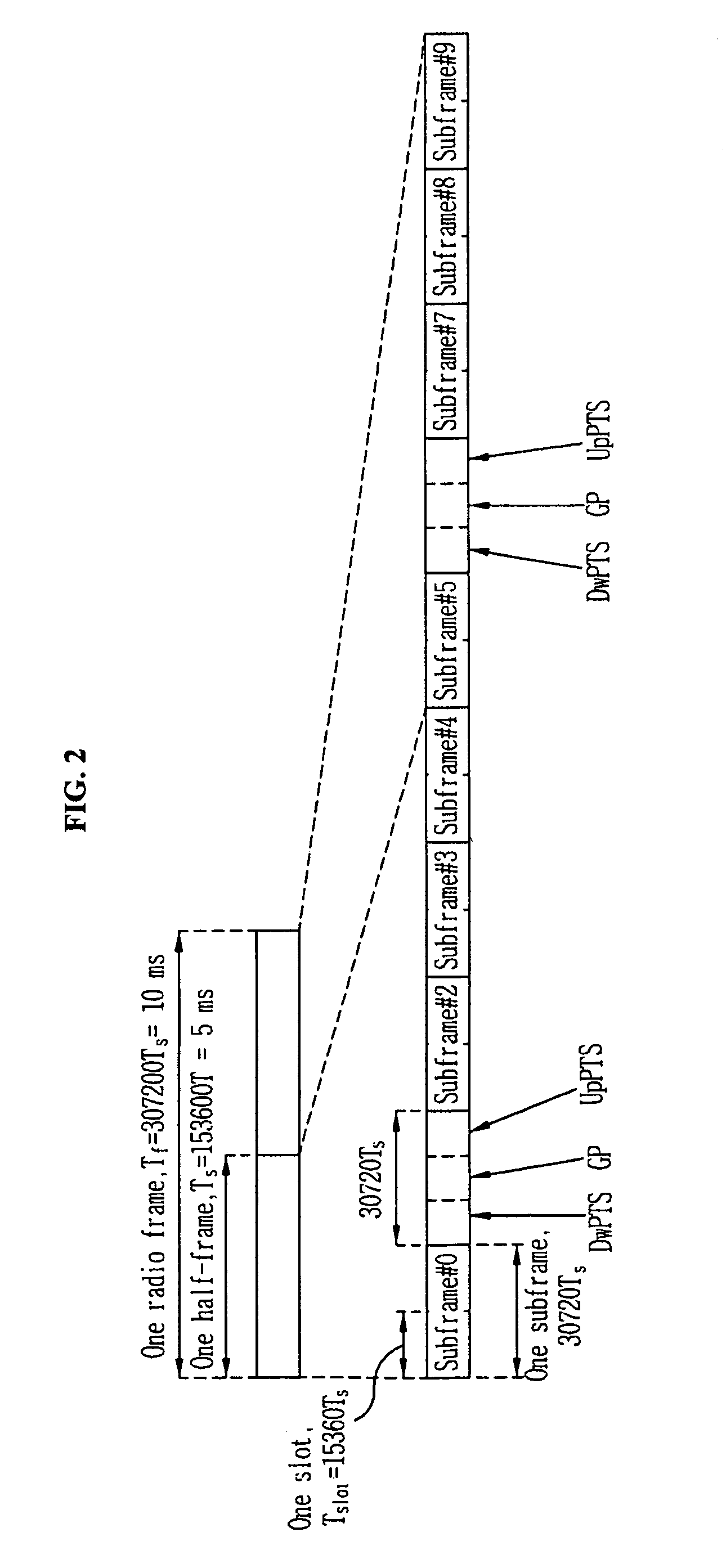Method for scheduling distributed virtual resource blocks
a virtual resource and scheduling technology, applied in the direction of orthogonal multiplex, multiplex communication, transmission path division, etc., can solve the problem of large bit overhead, and achieve the effect of combining efficient scheduling of an fss scheme and simply implementing a scheduling information transfer method
- Summary
- Abstract
- Description
- Claims
- Application Information
AI Technical Summary
Benefits of technology
Problems solved by technology
Method used
Image
Examples
embodiment 1
[0139]This embodiment is directed to a method for switching divided parts to a distributed / non-distributed mode by setting a reference value for the number of DVRBs allocated to one UE. Here, the ‘distributed mode’ refers to a mode where the gap between divided DVRB parts is not 0, and the ‘non-distributed mode’ refers to a mode where the gap between divided DVRB parts is 0.
[0140]Assume that the number of DVRBs allocated to one UE is M. When M is smaller than a specific reference value (=Mth), divided parts of each DVRB are distributively allocated, thereby raising the diversity order.
[0141]Conversely, when M is larger than or equal to the reference value (=Mth), the divided parts are allocated to the same PRB, not distributively allocated. This allocation of the divided parts to the same PRB can reduce the number of PRBs to which DVRBs are distributively mapped, thus limiting the diversity order.
[0142]That is, in the case where M is larger than or equal to the reference value Mth, ...
embodiment 2
[0145]This embodiment is directed to a method for switching divided parts to a distributed / non-distributed mode using a control signal. Here, the ‘distributed mode’ refers to a mode where the gap between divided DVRB parts is not 0, and the ‘non-distributed mode’ refers to a mode where the gap between divided DVRB parts is 0.
[0146]The embodiment 2 is a modified version of the embodiment 1. In the embodiment 2, Mth is not set, and, as needed, a control signal is transmitted and received to switch divided parts to the distributed / non-distributed mode. In response to the transmitted and received control signal, divided DVRB parts can be distributed to raise the diversity order or be mapped to the same PRB to lower the diversity order.
[0147]For example, the control signal may be defined to indicate the value of a gap, which is a relative distance between divided parts of each DVRB mapped to PRBs. That is, the control signal may be defined to indicate the gap value itself.
[0148]For examp...
embodiment 3
[0163]The embodiment 3 is directed to a method for, when mapping divided parts of DVRBs, mapping the divided parts to RBs belonging to one specific subset and then mapping the divided parts to RBs belonging to other subsets after mapping the divided parts to all the RBs of the specific subset.
[0164]According to this embodiment, when consecutive DVRB indexes are mapped to distributed PRBs, they can be distributively mapped within one subset and then mapped to other subsets when they cannot be mapped within the one subset any longer. Also, interleaving of consecutive DVRBs is performed within a subset.
[0165]FIGS. 17 and 18 illustrate a DVRB mapping method according to one embodiment of the present invention.
[0166]DVRB0 to DVRB11 are distributively mapped within a subset 1 (1703), DVRB12 to DVRB22 are then distributively mapped within a subset 2 (1704), and DVRB23 to DVRB31 are then distributively mapped within a subset 3 (1705). This mapping can be carried out by a method of using a b...
PUM
 Login to View More
Login to View More Abstract
Description
Claims
Application Information
 Login to View More
Login to View More - R&D
- Intellectual Property
- Life Sciences
- Materials
- Tech Scout
- Unparalleled Data Quality
- Higher Quality Content
- 60% Fewer Hallucinations
Browse by: Latest US Patents, China's latest patents, Technical Efficacy Thesaurus, Application Domain, Technology Topic, Popular Technical Reports.
© 2025 PatSnap. All rights reserved.Legal|Privacy policy|Modern Slavery Act Transparency Statement|Sitemap|About US| Contact US: help@patsnap.com



